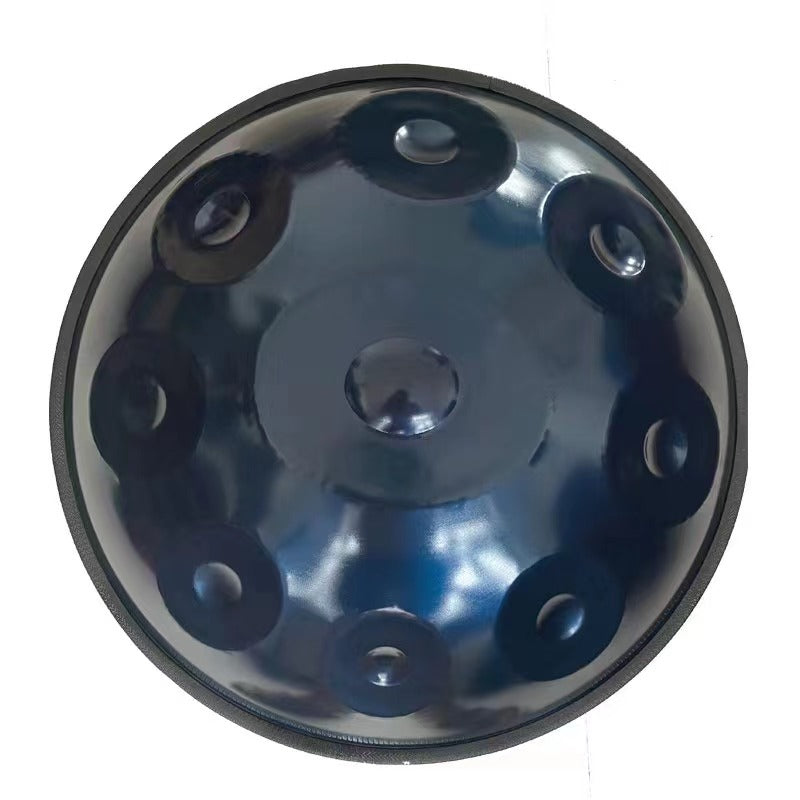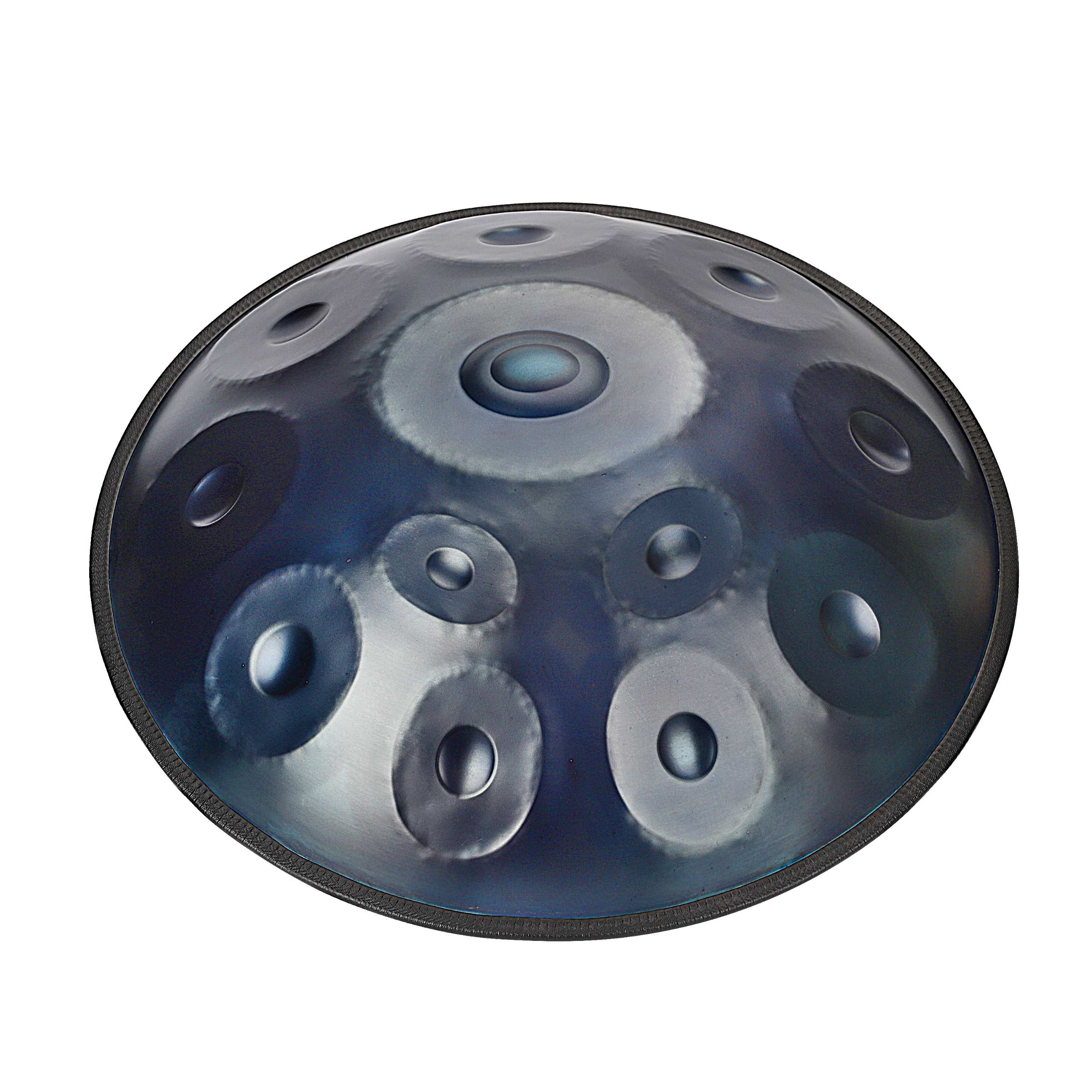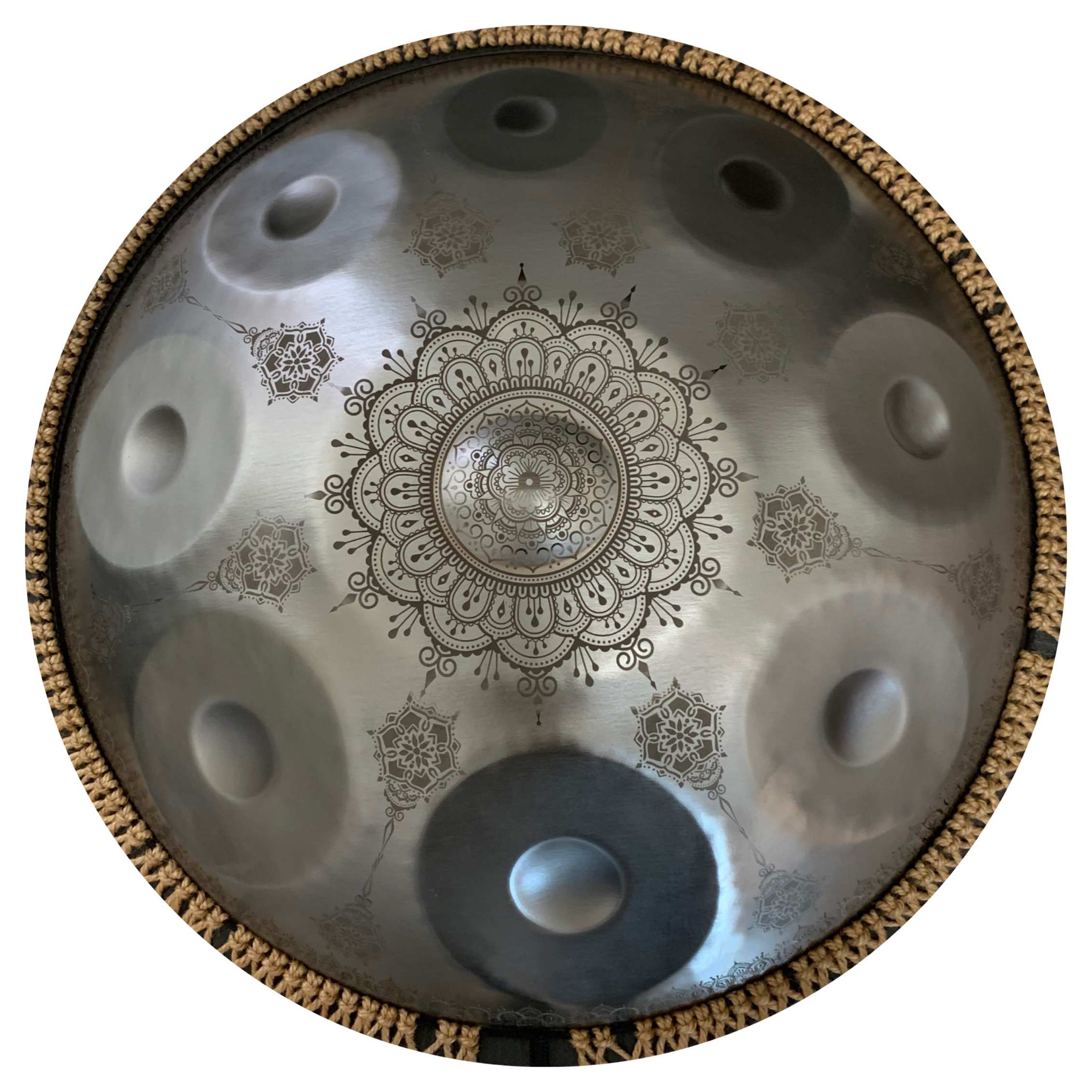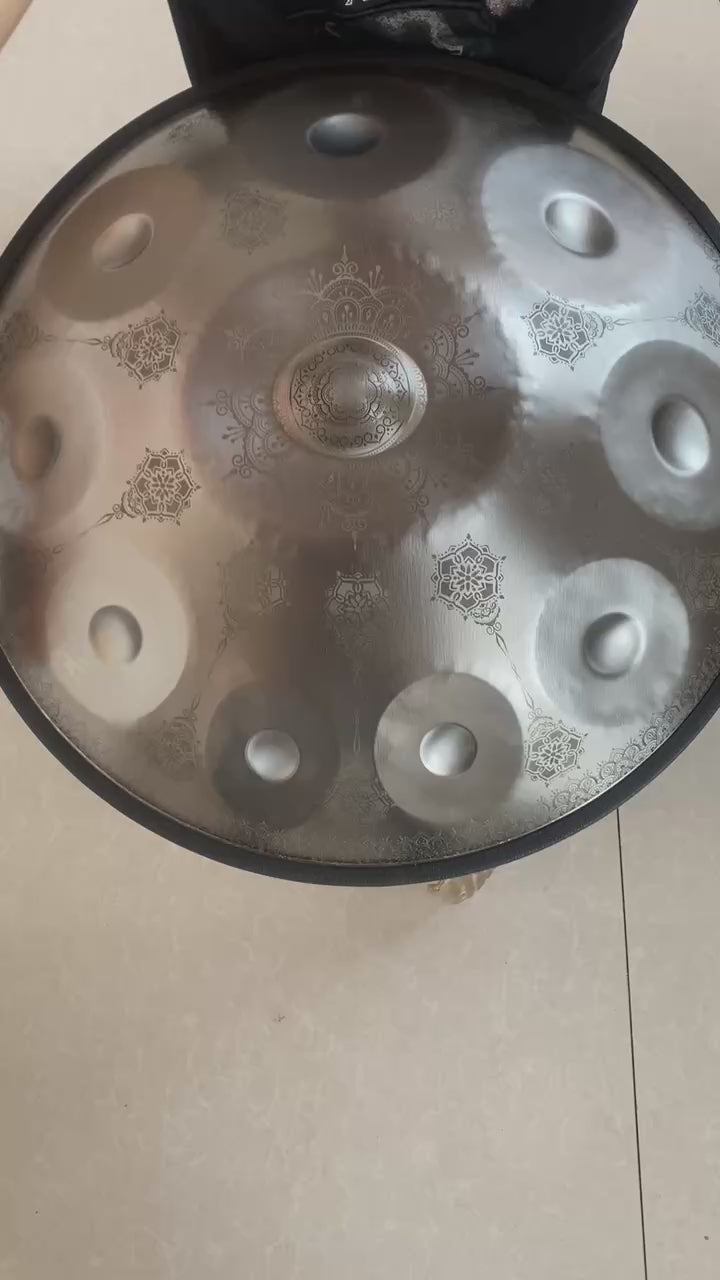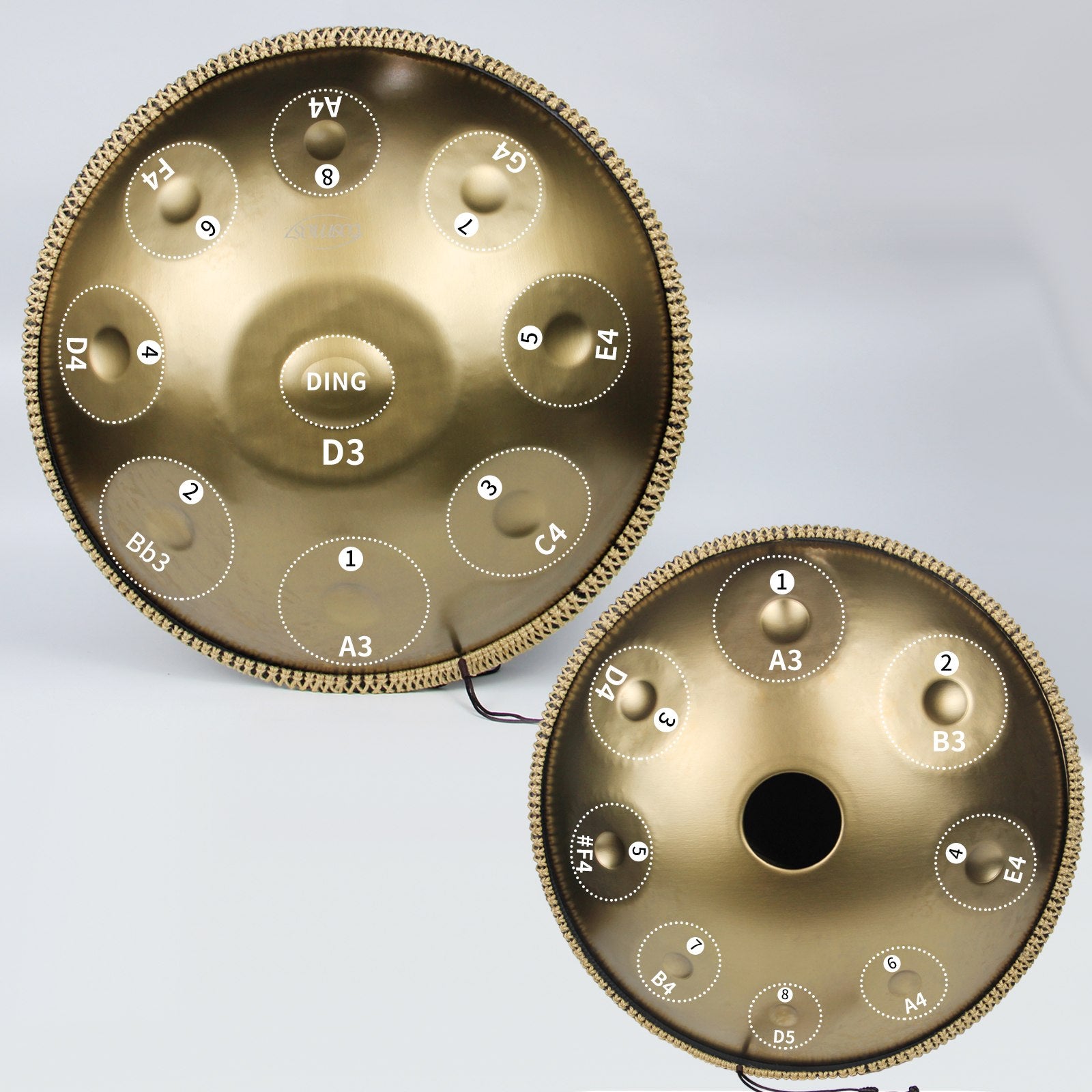Discover the captivating soundscapes of the handpan instrument. Let’s look at its history, unique tones, and versatile applications.

The handpan is a captivating musical instrument that has won the hearts of musicians and sound enthusiasts worldwide. The handpan’s seductive qualities, long history, and diverse playing styles make it an appealing addition to any musician’s repertoire.
This blog post will look at the interesting world of handpans. We’ll also learn about their history and the various aspects contributing to the handpan’s unique soundscapes.
The Origins and Evolution of the Handpan
The handpan’s history began in the late twentieth century with Swiss instrument makers Felix Rohner and Sabina Schärer. Inspired by steelpan drums, ghatams, gongs, and gamelan instruments, they set out to create a one-of-a-kind musical experience. The outcome was the Hang, copyrighted in 2000. It laid the foundation for the handpan family.
Today, many instrument makers create handpans, each with their own design modifications. However, the fundamental concept remains unchanged: two hemispherical metal shells are nitrided and tuned to produce a central “Ding” note surrounded by a circle of secondary “tone fields” on top. The bottom has a central aperture known as the “Gu.”
The Versatile Soundscape of the Handpan
One of the handpan’s most appealing features is its capacity to produce diverse sounds, from deep bass notes to brilliant, bell-like tones. The combination of metallic resonance and harmonic overtones results in a rich auditory palette that is both soothing and captivating.
Handpan accents, or small differences in sound created by varied playing approaches, offer a new layer of intricacy to the instrument’s tone. Musicians can produce various dynamic and expressive sounds by adjusting their hits' velocity, angle, and position.
Playing Techniques
The handpan is a versatile and expressive instrument that may be played with various approaches to produce distinct soundscapes. To play the handpan properly, players employ delicate mallet-like strokes with their fingertips and slaps, beats, and bangs on its edges. This idiophone produces sound mostly through its own vibration, with Helmholtz resonance providing immersive audio experiences.
Different playing styles for diverse effects
Handpan players employ a variety of ways to obtain different sounds from the instrument:
- Finger tapping: To produce clear and melodic tones, softly tap the notes with your fingertips.
- Slapping: To achieve a more percussive effect, slap the handpan’s surface with your palms or fingers. Tap gently on the tone fields with your fingertips to make delicate, musical notes. Slapping produces percussive, rhythmic sounds using the flat part of the hand or finger.
- Muting: Placing one finger on a note while striking another can muffle specific harmonics and alter the overall timbre of your Bass tone manipulation. Applying pressure to different areas of the central Ding dome alters bass frequencies in interesting ways. Muting involves dampening the tone fields with the palm while striking to generate muted, staccato sounds.
- Glissando: Moving the fingers across the surface of the handpan to produce a continuous, sweeping sound.
- Harmonics: Gently tap select points on the tone fields to highlight the harmonic overtones.
The Soundscapes of the Handpan
The sound of the handpan is frequently described as ethereal, soothing, and otherworldly. Its distinctive timbre blends the percussive capabilities of a drum with the melodic richness of a tuned instrument. This dual nature enables the handpan to produce nuanced soundscapes that take listeners to tranquillity and reflection.
One of the most noticeable aspects of the handpan’s sound is its sustain. When a note is hit, it resonates for a long time, resulting in a lingering harmonic that fills the surrounding area. Combined with the instrument’s capacity to play numerous notes simultaneously, this sustain enables musicians to create intricate musical textures that evolve and change over time.
The harmonic interplay of the notes is another important feature of the handpan's soundscape. Each note is precisely tuned to complement the others, resulting in a beautiful tapestry of overtones and resonances. This harmonic complexity is one of the reasons why the handpan works so well for creating peaceful and immersive musical experiences.
The Cultural Impact of the Handpan
Since its inception, the handpan has crossed cultural barriers, finding a home in various musical traditions and genres. Its calming, meditative qualities make it popular for yoga courses, sound healing sessions, and relaxing music.
Handpan music has also become popular worldwide, with musicians combining the instrument’s distinct tones with traditional instruments from many nations. This sonic fusion provides a rich tapestry of worldwide musical expressions that appeal to audiences worldwide.
The Growing Popularity of Handpans
Online Community and Resources
The emergence of the internet and social media has contributed significantly to the handpan’s appeal. Handpan lovers have formed online groups to share ideas, seminars, and performances with a global audience. Websites, forums, and social media groups are useful resources for new and experienced players.
Handpan Festivals & Gatherings
Handpan festivals and gatherings demonstrate the instrument’s vast appeal. These gatherings unite musicians, builders, and fans to celebrate their love of handpan music. Workshops, performances, and jam sessions offer opportunities to learn, collaborate, and experience the instrument in a communal setting.
The Enchanting Sound Tapestry of the Handpan
The handpan’s enchantment is found in its complex sound tapestry. Each tone field has a specific pitch, and the nitrided steel generates a pleasant, prolonged sound. The “Ding” emits a clear, high-pitched sound, while the surrounding tones contain various lower notes and harmonics. The Gu, when played, provides a deep, bassy counterpoint.
This combination allows for a diverse range of musical expression. The handpan musical instrument can produce soft melodies, hypnotic rhythms, and percussion patterns. Their adaptability allows them to be used in various genres, including ambient, neoclassical, world music, and contemporary improvisation.
Applications and Impact of the Handpan
The handpan’s unearthly tones have fascinated both listeners and performers. It has found applications in meditation, sound therapy, and musical performances. The handpan’s peaceful resonance promotes serenity and tranquillity, making it an ideal instrument for relaxation and mindfulness.
The handpan allows musicians to experiment with different sounds. Its distinct voice lends a compelling dimension to recordings and live performances. Whether performed solo or in an ensemble, the handpan's captivating melodies create an indelible impact.
Conclusion
The transformation of the handpan musical instrument from a new creation to a cherished instrument demonstrates its compelling tone and inviting nature. Its rich sound tapestry, ease of learning, and agility make it ideal for personal discovery and creative expression. So, if you’re looking for a one-of-a-kind musical partner or just want to add a little enchantment to your life, take up a handpan and begin a journey of acoustic exploration.


